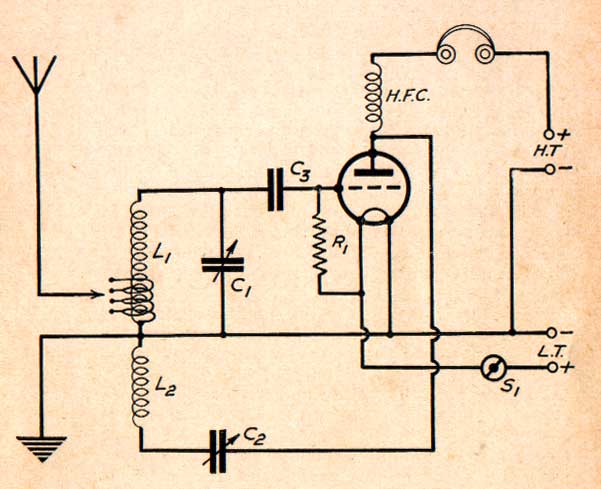This is where I started, not back when these were first published but in radio. I had a keen interest in radio from as early as I can remember. At first I used to take old sets apart to see how they worked. Of course there are some that I wish I hadn't and still had, however that's the way of things.
The first radio that I actually built from scratch, was a kit of parts from a junk radio shop called "Eddies" , it consisted of a small plastic box some components and a copy of a circuit diagram with values. If I remember correctly there were three types of transistor they sold all were germanium, they were blue spot (hf) green spot( general) and red spot (audio). The circuit was essentially a transistor version of a single valve(tube{us}) Tuned Radio Frequency (TRF) circuit. It worked well enough, I modified it later by adding a ferrite rod and coil to replace the air cored coil and could then dispense with the long aerial (antenna).
After this I built several variations and a five transistor superhet receiver. The last Transistor project I built was a pre-amp and amplifier designed by Mullard. There were several novel features but one of the most interesting was the sliding class AB output stage, at low power output it was class A, as the power was increased to maximum it became class B.
After purchasing a few early books on radio design from an antique store, I became interested more in the history and thought process that had brought to where we are today. In particular some of ideas which seem to be no longer used but seem to tackle the problems in interesting and novel ways.
I wanted to experience what it was like to use these designs. I know I could have redesigned the circuits to use modern transistor technology but I may miss something in doing that after all the characteristics of a vacuum tube and semiconductor are quite different. This led me to both my junk box and acquire more old parts. I used parts that were of a similar period where ever possible. In most cases I as amazed how well these designs worked, in fact I was astounded by the performance of some of them.
Super Regenerative receiver
The one design which I am most impressed with for both the simplicity and performance is the Super Regenerative receiver. This design out performed all other single valve(tube) designs by a large margin. True it does have some drawbacks, it can become a transmitter if you are not careful, it can be pulled of frequency by a more powerful local station and if the feedback it too great it can narrow the bandwidth too much for good quality reception. Having said that it is a remarkable design.

The super regenerative receiver is similar to the simple detector with reaction feedback. It is adjusted to the threshold of oscillation so the at the incoming signal will cause the circuit to oscillate. At this instant a local quench damps the out put of the oscillation, ensuring that the receiver is operating at maximum sensitivity.
February 21, 2002